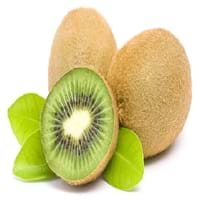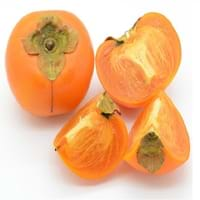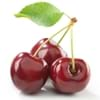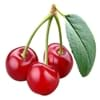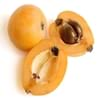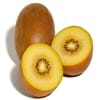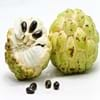Health Benefits
Asthma treatment, Heart care, Prevents constipation, Treatment of skin Diseases
Cancer prevention, Heart care, Heat stroke treatment, Improves eye vision, Weight loss properties
General Benefits
Boosts immune system, Controls blood pressure, Eye care, Helps in weight loss
Anti-inflammatory properties, Boosts immune system, Cures cough, Digestive aid, Fights against infections, Improves blood circulation
Skin Benefits
Brightens and lightens complexion, Heals sunburn, Reduces wrinkles, Skin rejuvenation, Treatment of acne, Treatment of dark spots, Treatment of skin diseases
Anti-aging benefits, Brightens and lightens complexion, Reduces wrinkles
Hair Benefits
Prevents hair loss, Promotes longer and healthier hair, Treatment of dandruff
Promotes longer and healthier hair, Protects hair
Allergy Symptoms
Abdominal pains, Anaphylaxis, Breathing difficulty, Itching in tongue and other parts of mouth, Itching sensation in throat, Swelling of mouth, tongue or lips, Vomiting
Abdominal pains, Anaphylaxis, Inflammation
Side Effects
Allergic reaction, Diarrhoea, Skin rash, Possibly unsafe during pregnancy
Diarrhoea, Might affect blood pressure level
Best Time to Eat
Any time except an hour after meal, Don't consume at night and before bed
Along with meal, As a snack in the late afternoon, Don't consume at night and before bed, Morning time (before lunch)
Vitamin B5 (Pantothenic Acid)
Not Available
Vitamin C (Ascorbic Acid)
Vitamin K (Phyllochinone)
Phytosterol
Not Available
Calories in Fresh Fruit with Peel
Calories in Fresh Fruit without Peel
Not Available
Not Available
Calories in Frozen Form
Not Available
Not Available
Calories in Canned Form
Not Available
Type
Tropical
Berry, Tree fruit
Season
Spring, Summer, Winter
Autumn, Winter
Varieties
Zhong Hua, Jing Li, Ruan Zao, Mao Hua and Huang Yan
Fuyu, Jiro, Gosho, Suruga, Hiratanenashi, Hachiya, Aizumishirazu, Yotsumizo, Yokono, Costata, Ormond and Tamopan
Color
Brown, Green
Orange, Red, Yellow
Inside Color
Green
Orange
Taste
Sour-Sweet, Tangy
Sweet
Origin
China
Burma, China, India, Japan
Soil Type
Well-drained
Sandy loam, Well-drained
Climatic Conditions
Cold, Sunny
Can tolerate wide range of climates
Facts about
- The name Kiwi is due to the resemblance with 'Kiwi' bird.
- Animals like monkeys and deer also consume Kiwifruit.
- Originated in china, this fruit is also called as 'Chinese gooseberry.'
- Unripe persimmons contain lots of tannin which is used to brew sake & to preserve wood in Japan.
- A small non-edible fruit of persimmon tree is crushed with water, the solution is painted on paper & used to repel mosquitoes.
Spirits
Yes
Not Available
Cocktails
Yes
Not Available
Other Countries
Chile, France, Greece, Iran, Japan, New Zealand, Portugal, Turkey, United States of America
Azerbaijan, Brazil, Israel, Italy, Japan, Pakistan
Top Importer
United States of America
United States of America
Top Exporter
New Zealand
Japan
Botanical Name
Actinidia deliciosa
Diospyros kaki
Synonym
Not Available
Not Available
Subkingdom
Tracheobionta
Tracheobionta
Division
Magnoliophyta
Magnoliophyta
Class
Magnoliopsida
Magnoliopsida
Subclass
Dillenhidae
Dillenhidae
Family
Actinidiaceae
Ebenaceae
Genus
Actinidia
Diospyros
Species
A. deliciosa
D. kaki
Generic Group
Kiwi
Not Available
Compare Green Kiwi and Japanese Persimmon
It is important compare Green Kiwi and Japanese Persimmon as both the fruits have a different nutritional value. Their comparison can be done on the basis of their vitamin and mineral content, calories, benefits as well as characteristics, making it easier for us to choose the best fruit for our diet. Their general health benefits are as follows:
Green Kiwi Benefits: boosts immune system, controls blood pressure, eye care and helps in weight loss.
Japanese Persimmon Benefits: anti-inflammatory properties, boosts immune system, cures cough, digestive aid, fights against infections and improves blood circulation.
Fruits are also used as a remedy for various hair problems. The hair benefits of Green Kiwi are: prevents hair loss, promotes longer and healthier hair and treatment of dandruff and hair benefits of Japanese Persimmon are: promotes longer and healthier hair and protects hair. Some fruits are known to cause allergic reactions. The allergy symptoms of first fruit are: abdominal pains, anaphylaxis, breathing difficulty, itching in tongue and other parts of mouth, itching sensation in throat, swelling of mouth tongue or lips and vomiting and the symptoms of second fruit are: abdominal pains, anaphylaxis and inflammation. Get sorted Green Kiwi vs Japanese Persimmon comparison with the help of fruit comparison tool by fruitvs.com.
